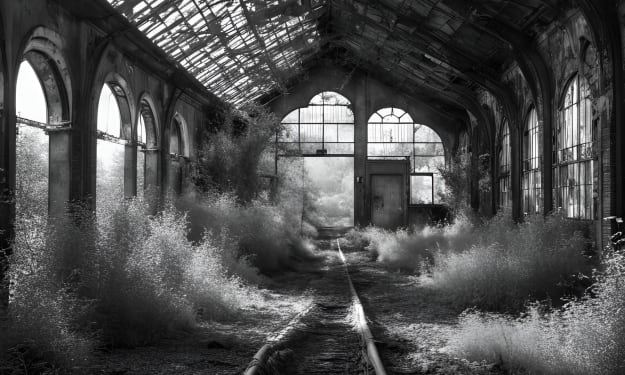Content warning
This story may contain sensitive material or discuss topics that some readers may find distressing. Reader discretion is advised. The views and opinions expressed in this story are those of the author and do not necessarily reflect the official policy or position of Vocal.

The history of psychedelics in art is a colorful tapestry woven with threads of exploration, transcendence, and revelation. Dating back centuries, various cultures around the world have incorporated mind-altering substances into artistic practices, often as a means of accessing spiritual realms or unlocking hidden truths. In ancient civilizations such as the Aztecs, Mayans, and Egyptians, hallucinogenic plants like peyote, psilocybin mushrooms, and cannabis were revered for their ability to induce visionary experiences, which found expression in religious rituals, ceremonial art, and sacred iconography.
The modern era witnessed a resurgence of interest in psychedelics as artists, intellectuals, and countercultural figures embraced these substances as tools for expanding consciousness and challenging societal norms. From the visionary paintings of Ernst Fuchs to the surreal landscapes of Salvador Dalí, psychedelics became a catalyst for artistic innovation, inspiring a new wave of psychedelic art that transcended conventional boundaries and defied categorization. Today, the legacy of psychedelics in art continues to evolve, with contemporary artists exploring the intersection of inner experience, visual expression, and collective consciousness in increasingly bold and inventive ways.
Alex Grey is renowned for his intricate, visionary artwork that explores themes of spirituality, consciousness, and transcendence. His most famous piece, "The Net of Being," is a stunning depiction of interconnectedness, featuring a central figure with outstretched arms enveloped in a web of intricate patterns and sacred geometry. Grey's work is deeply influenced by his experiences with psychedelics, particularly LSD, which he views as a tool for accessing higher states of awareness.
Salvador Dalí, the master of surrealism, was no stranger to the world of psychedelics. Known for his eccentric personality and avant-garde approach to art, Dalí experimented with a variety of mind-altering substances, including mescaline and LSD. One of his most iconic works, "The Persistence of Memory," features melting clocks draped over barren landscapes, a visual metaphor for the fluidity of time and perception that often characterizes the psychedelic experience.
Pablo Amaringo was a Peruvian artist and shaman who channeled his ayahuasca visions into vibrant paintings that capture the essence of the Amazonian jungle. His most famous artwork, "Ayahuasca Visions," is a collection of intricate botanical and spiritual scenes inspired by his experiences with the powerful hallucinogenic brew. Amaringo's work serves as a testament to the healing and transformative potential of psychedelic plants, as well as the interconnectedness of all life.
Mati Klarwein was a German-born artist best known for his surreal and psychedelic album cover artwork, including the iconic covers for albums by musicians such as Miles Davis, Santana, and Jimi Hendrix. His most famous painting, "Annunciation," is a vibrant and surreal depiction of the biblical scene, infused with psychedelic imagery and symbolism. Klarwein's bold use of color and intricate detail reflects his own explorations of altered states of consciousness through the use of psychedelics.
Ernst Fuchs was an Austrian artist and co-founder of the Vienna School of Fantastic Realism, a movement that blended elements of surrealism, symbolism, and mysticism. Fuchs' artwork often features fantastical and otherworldly landscapes inhabited by ethereal beings and mythical creatures. His most famous painting, "The Last Judgment," is a monumental work that explores themes of redemption, transcendence, and spiritual awakening. Fuchs' use of vivid colors and intricate detail creates a sense of depth and dimensionality that draws the viewer into a hypnotic trance.
The artists mentioned above represent just a few of the countless visionaries who have explored the realms of consciousness and creativity through the use of psychedelics. Whether through vibrant colors, surreal imagery, or intricate symbolism, these artists have pushed the boundaries of artistic expression and challenged our perceptions of reality. As we continue to delve deeper into the mysteries of the mind, the legacy of psychedelic art serves as a reminder of the profound connection between art, spirituality, and the human experience.
About the Creator
Janie
Passionate about unraveling the intricate tapestry of art history and contemporary artistic expressions. Beyond brushstrokes and colors, into the mental and physical struggles of artists.






Comments
Janie is not accepting comments at the moment
Want to show your support? Send them a one-off tip.